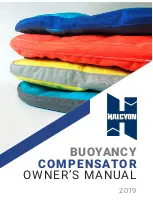
A-96.250.211 / 171121
AMI Sodium P
Product Description
12
Alarm Relay
One potential free contact. Alternatively:
Open during normal operation, closed on error and loss of
power.
Closed during normal operation, open on error and loss of
power.
Summary alarm indication for programmable alarm values and in
-
strument faults.
Input
For potential-free contact to freeze the measuring value or to inter
-
rupt control in automated installations (hold function or remote-off).
Safety
Features
No data loss after power failure. All data is saved in non-volatile
memory. Overvoltage protection of inputs and outputs. Galvanic sep
-
aration of measuring inputs from signal outputs.
Communica
-
tion Interface
(optional)
USB Interface for logger download.
Third signal output (can be used in parallel to the USB interface)
RS485 with Fieldbus protocol Modbus or Profibus DP
HART interface
On-line
Operation
The sample flows into the constant head [A] via the sample inlet [D]
and the flow regulating valve [C]. Adjust the flow regulating valve so
that always a small part of the sample flows through the overflow
tube [M] into the waste. This adjustment ensures a sufficient sample
flow through the flow cell [K].
First, the sample flows into the measuring chamber [K
1
] where the
sodium electrode [G] is installed and the sodium concentration of the
sample is measured. From there it flows into the measuring chamber
[K
2
] where the pH electrode [F], the temperature sensor [H] and the
reference electrode [E] are installed and thereafter it flows via flow
cell [K
3
] through the sample outlet [L].
During on-line operation, the standard bottle holder [R] is completely
turned down, and the sample flows from the constant head [A] into
the reaction tube [B]. Due to the different level of the constant head
and the flow cell, a negative pressure is created in the reaction tube
[B]. As a result, reagent-saturated air is sucked into the reaction
tube, raising the pH of the sample to a value of 10.5, and forming a
regular stream of air bubbles [J].
The bubble stream is used to monitor the correct sample flow with
the bubble detector
[I]. An inconsistent sample flow causes an inter
-
ruption of the bubble formation and produces a system error.
If the automatic regeneration module [P] is installed, the solenoid
valve [Q] opens at configurable intervals, which automatically etches
(i.e. regenerates) the sodium sensor.













































